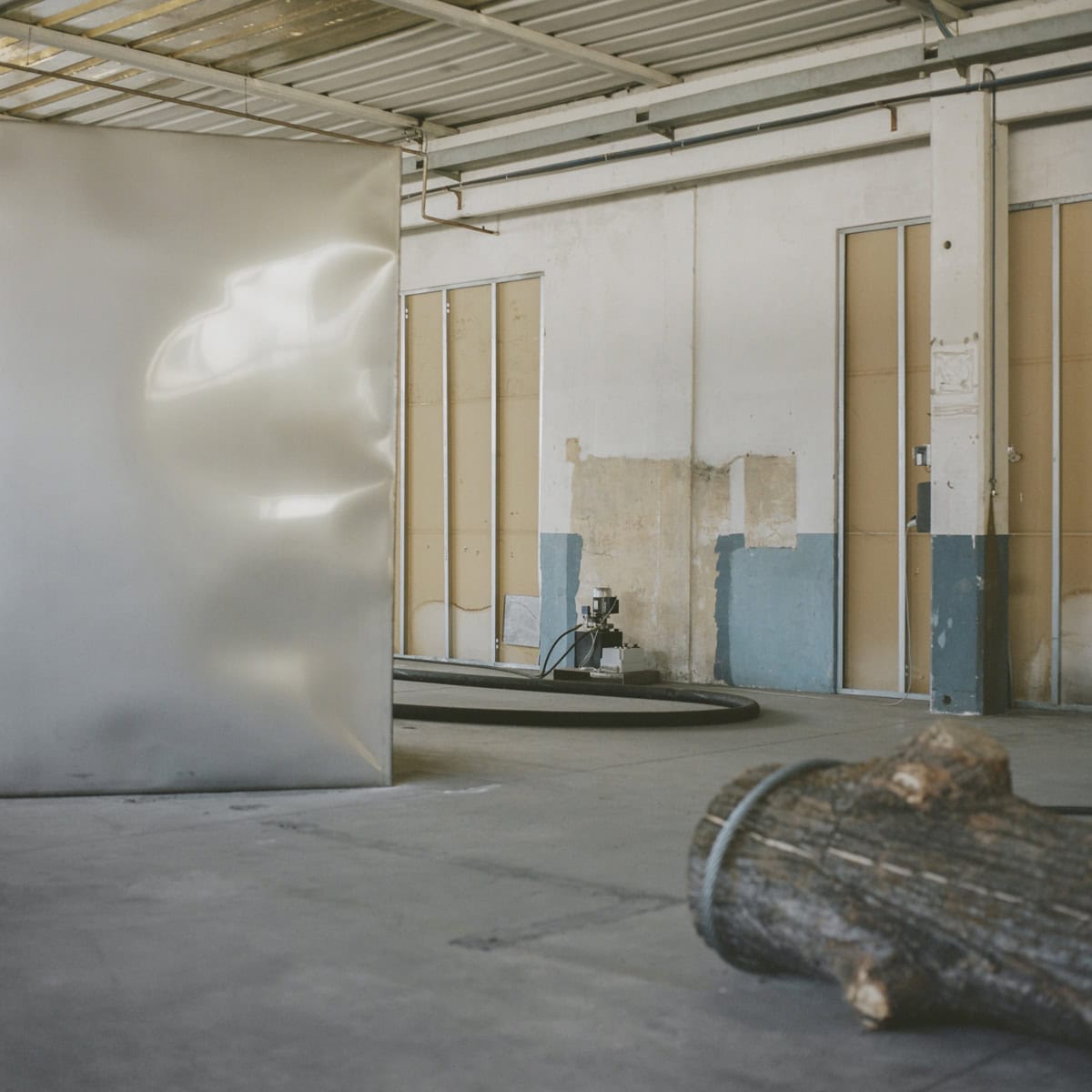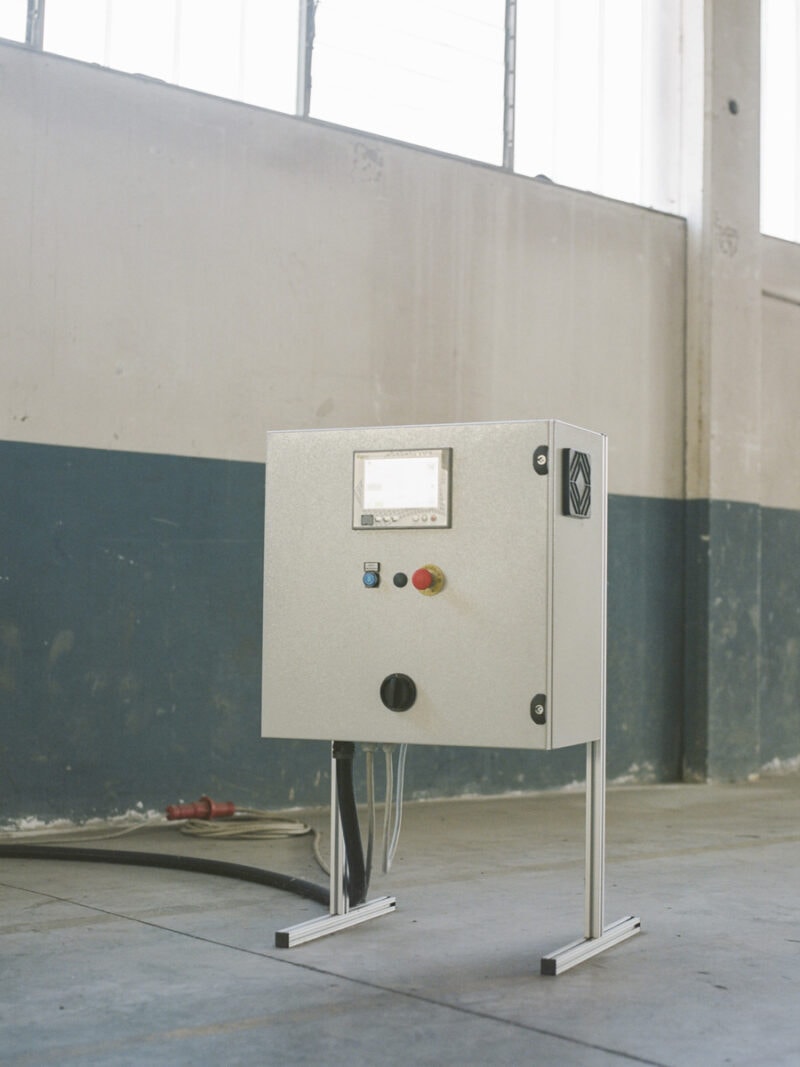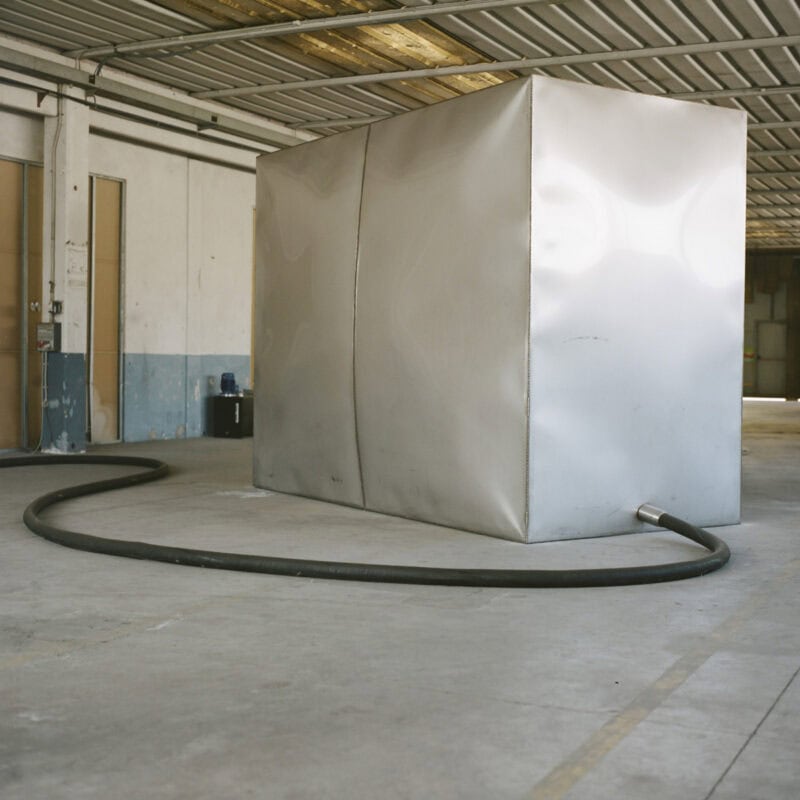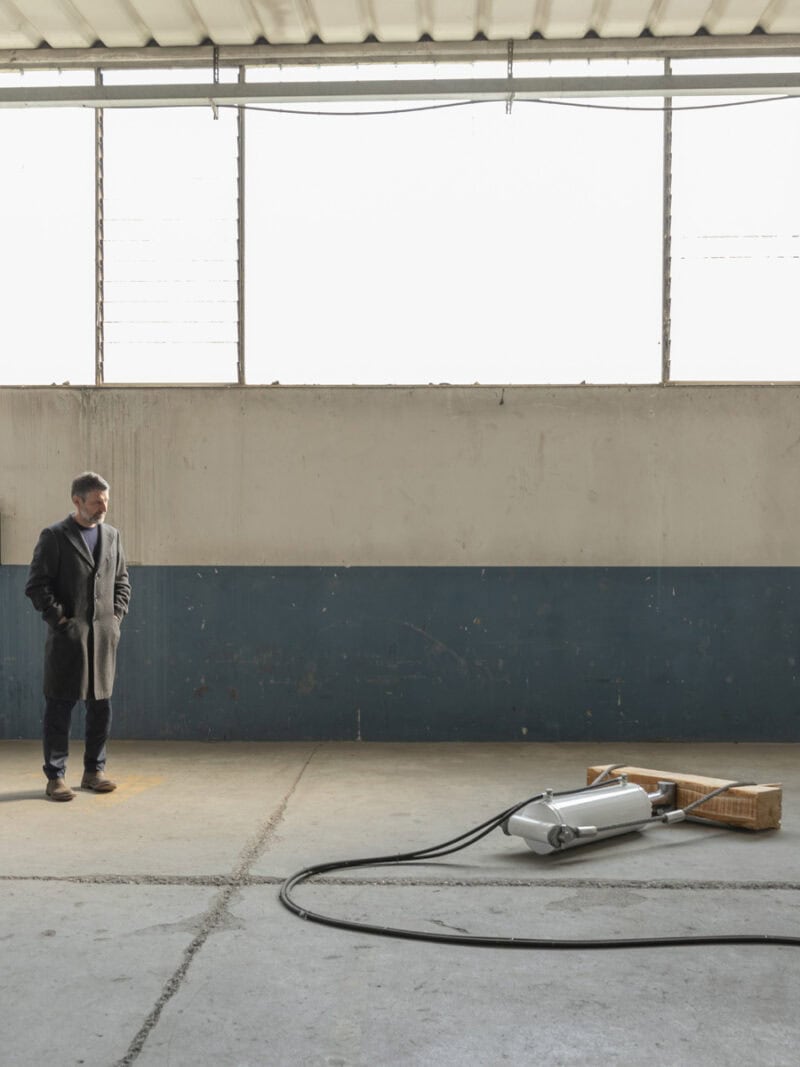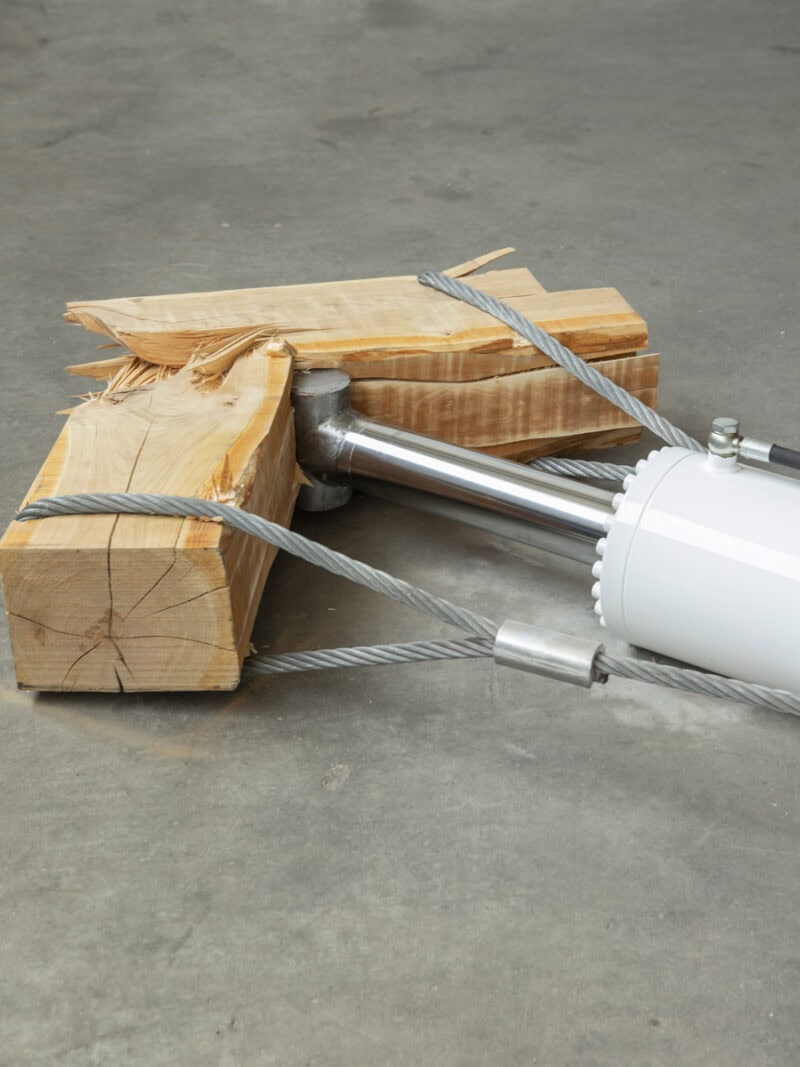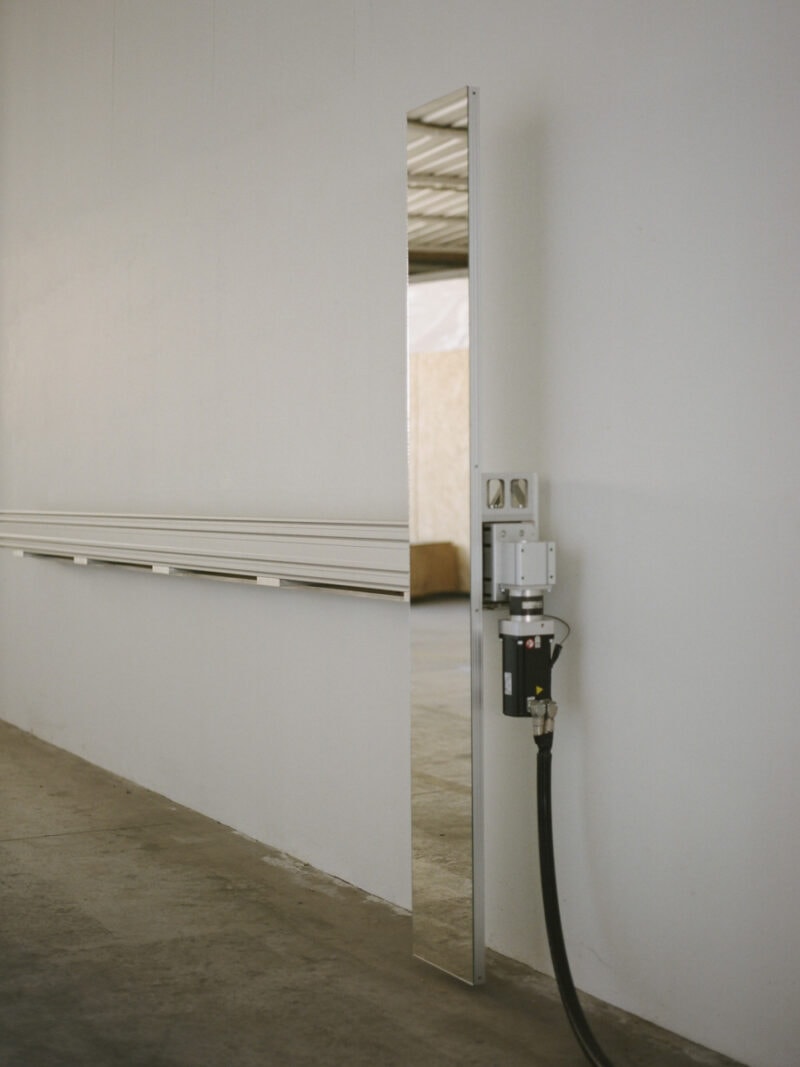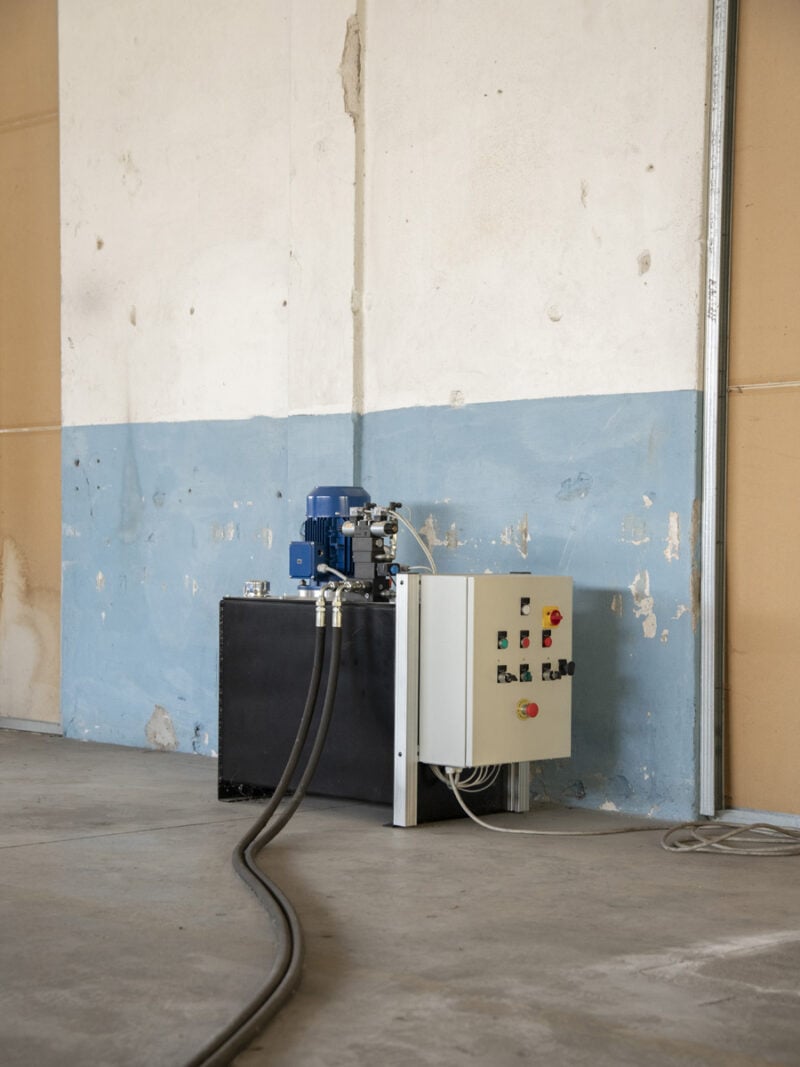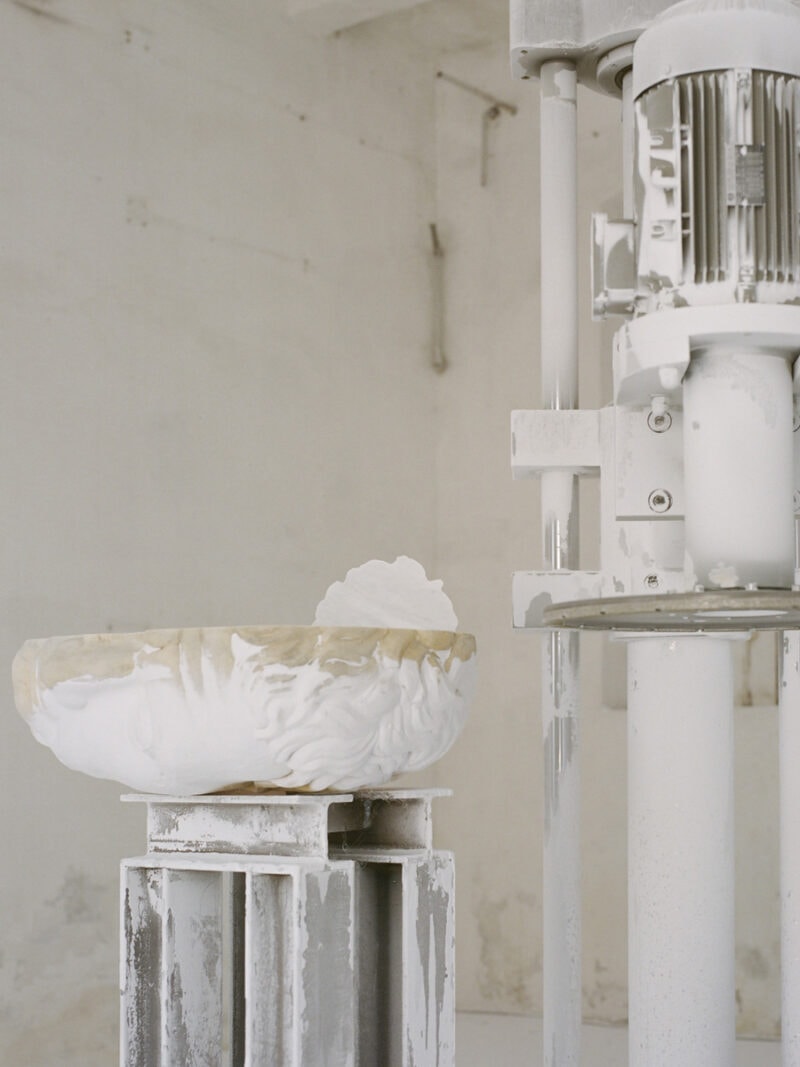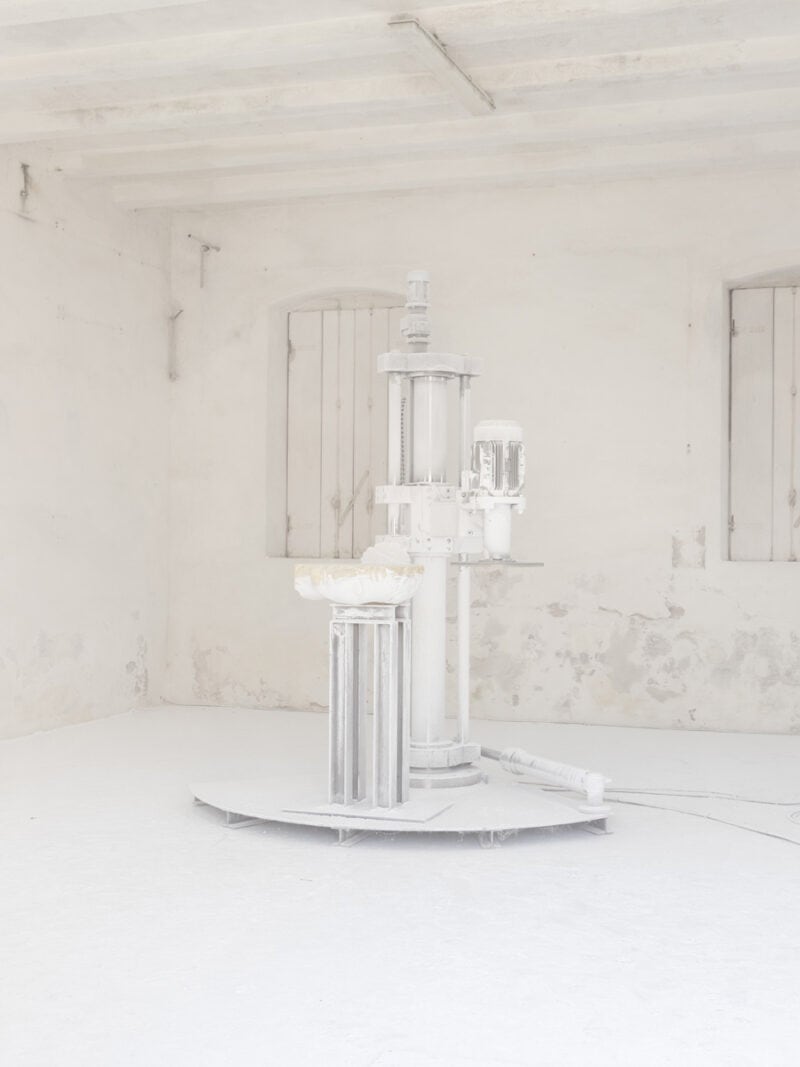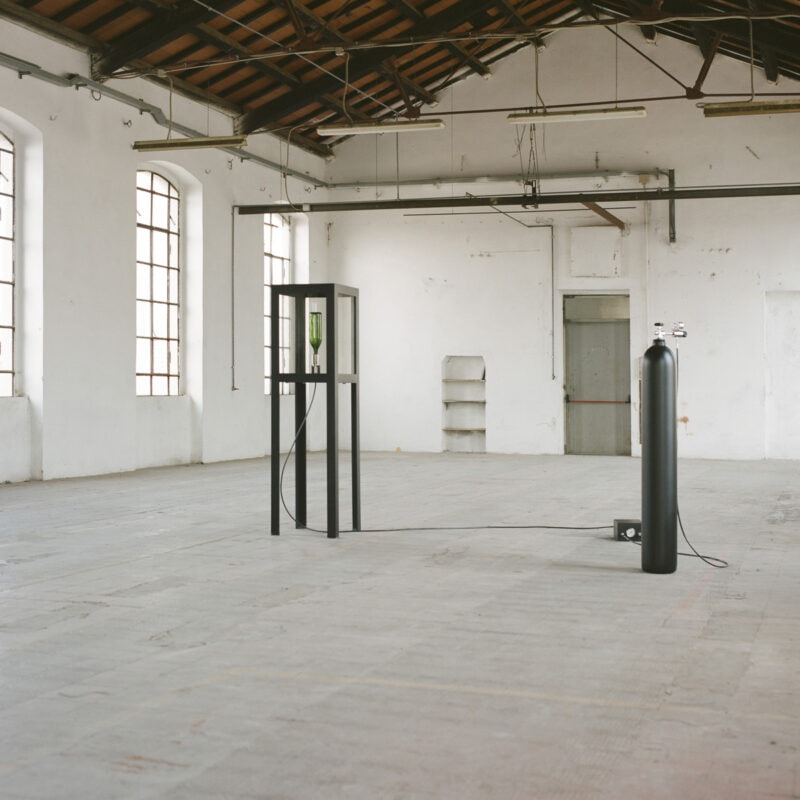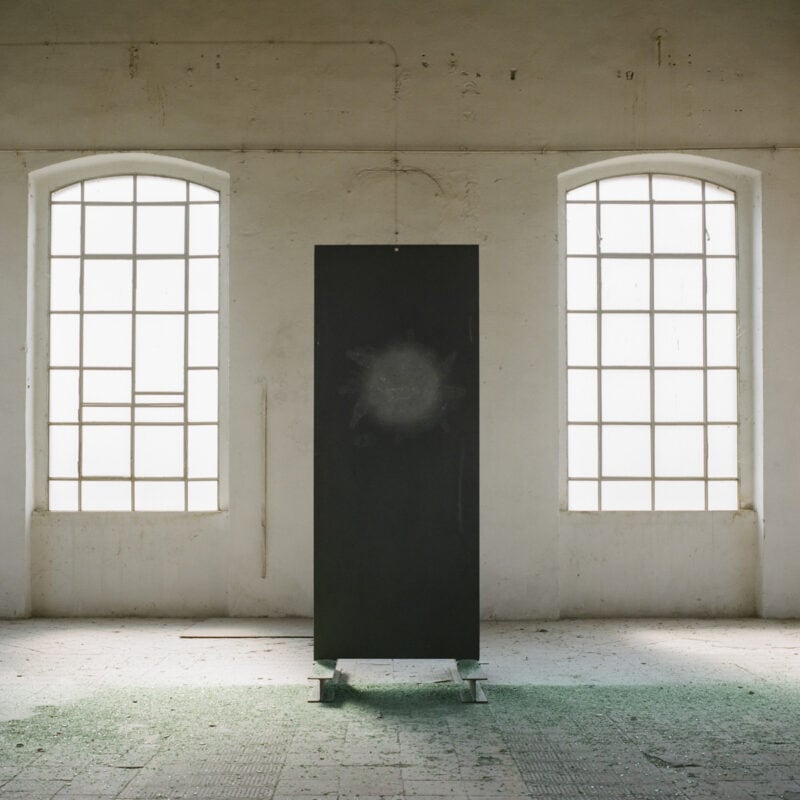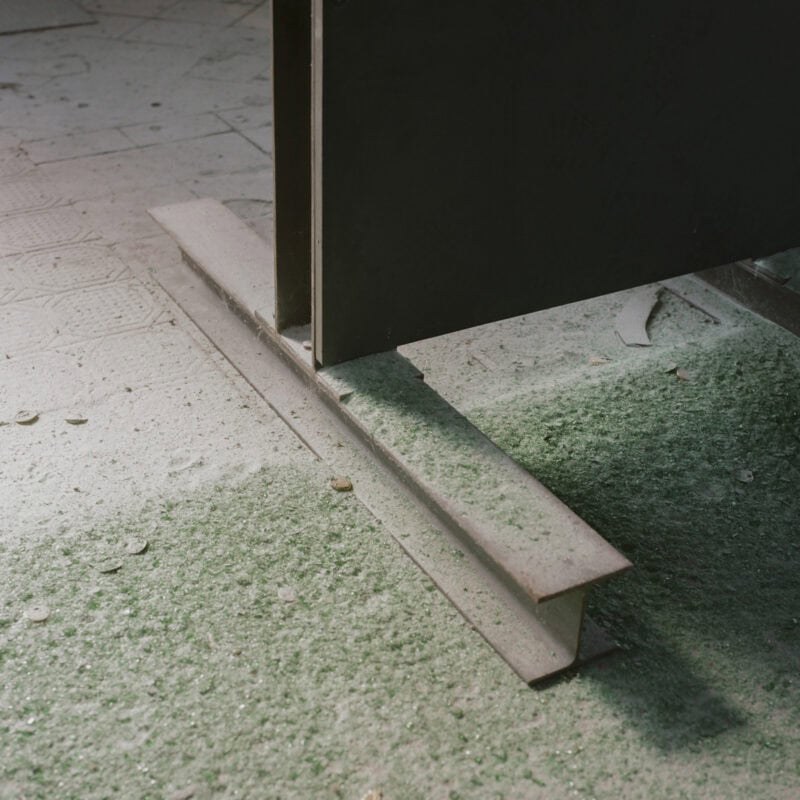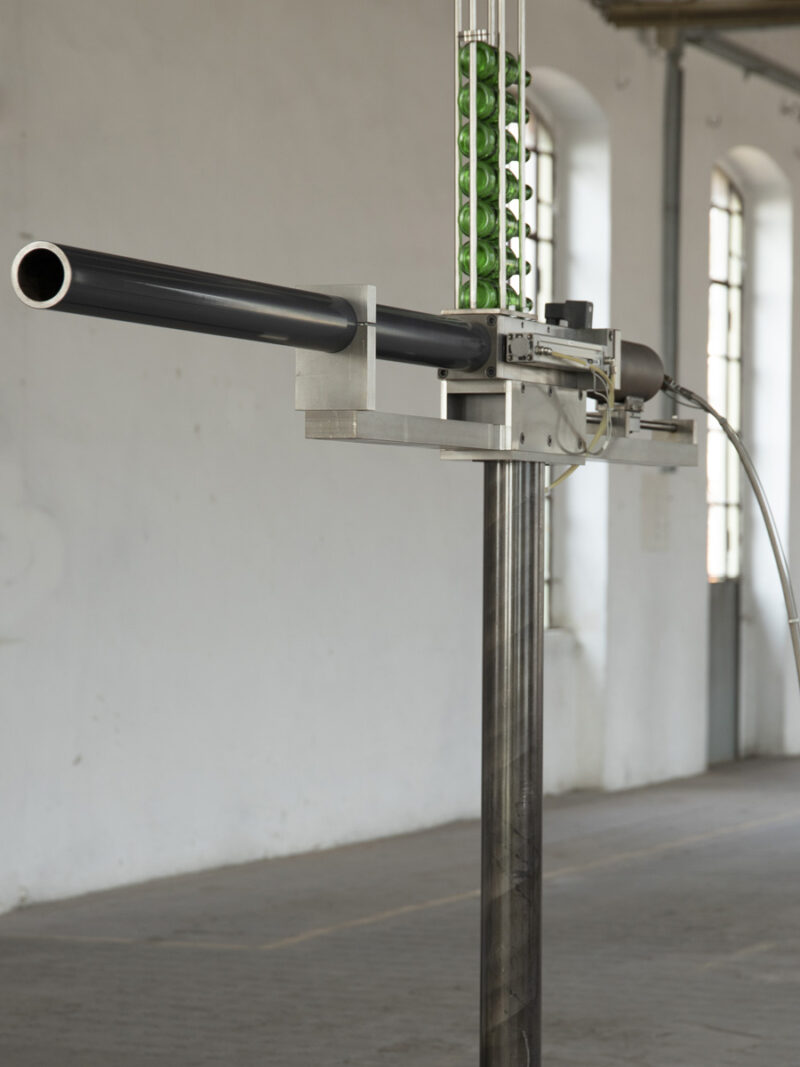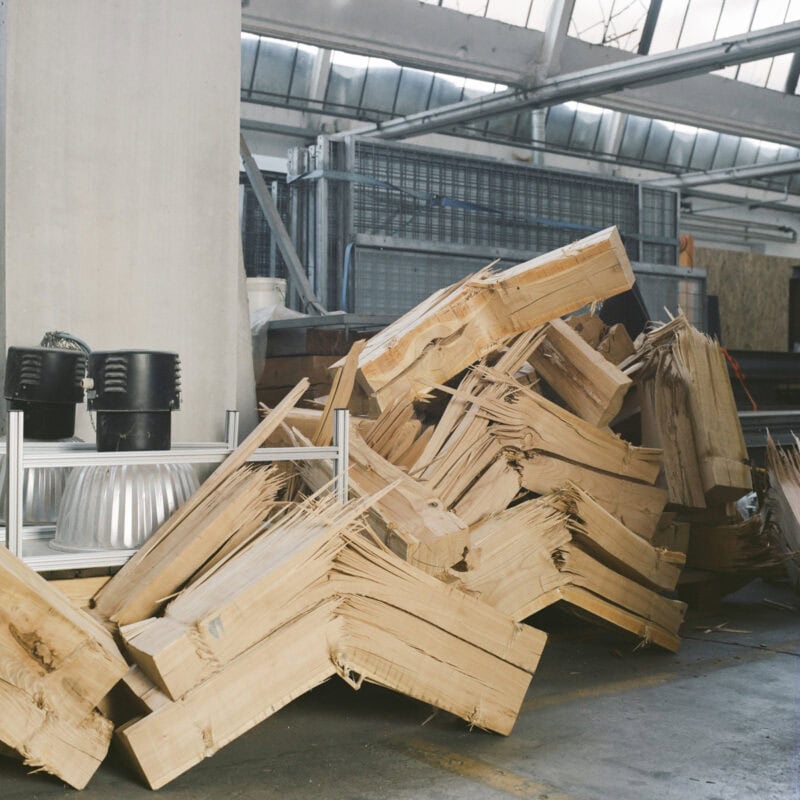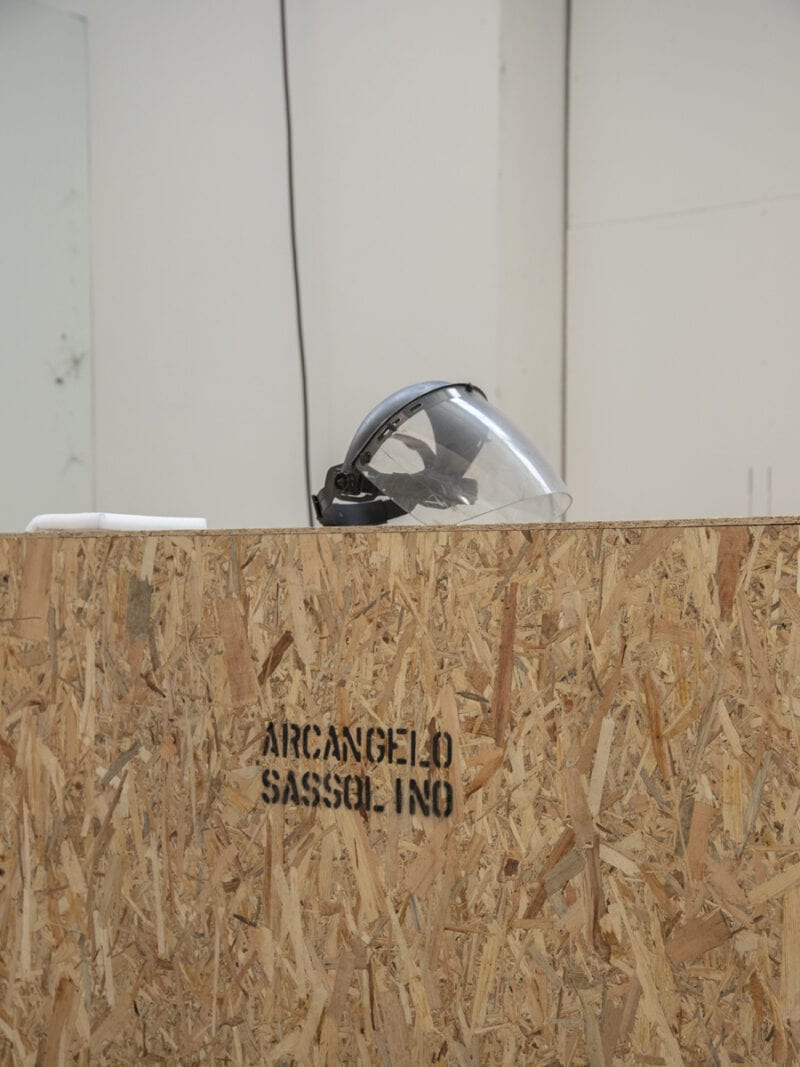We had the pleasure of visiting Arcangelo Sassolino in his Vicenza studio. We spent the day together and he told us about his upcoming installation at La Biennale di Venezia 2022.
A project that elevates art to a potential guide, capable of accompanying us in the complex vicissitudes of time.
Diplomazija astuta (2022) by Arcangelo Sassolino re-imagines Caravaggio’s masterpiece The Beheading of San Giovanni Battista (1608), juxtaposing biblical narrative to modern life. The immersive sculptural installation will be exhibited in the Malta Pavilion. Commissioned by Arts Council Malta, the Malta pavilion will be co-curated by Keith Sciberras (Malta) and Jeffrey Uslip (USA) and, together with Sassolino, will also include new works by Giuseppe Schembri Bonaci (Malta) and Brian Schembri (Malta).
The spectators are invited to experience in the present the tragedy and brutality of St. John’s execution, in a space where they can imagine a path towards reconciliation.
Through this work, Sassolino asserts that the enthusiasm for industrial progress, typical of Modernism, has culminated in humanity’s capacity for self-destruction. To create space for new progress, the signal material of Modernism, steel, must be melted. To metaphorically represent this message, the installation physically produces molten steel droplets, through induction technology, which fall into seven basins of water. Each basin represents a subject from The Beheading. Upon contact with the water, the molten steel creates a vivid light, cools, and recedes into darkness.
The Malta Pavilion thus becomes a spiritual space in which the public is asked to dialogue with metal and silence, with fire engulfed by water.
With Diplomazija astuta and Sassolino’s contemporary sculptural language, the biblical tragedy resonates with current world events, the injustices of the past are reconciled, and shared humanistic principles can be upheld in the future.
Arcangelo Sassolino (1967) was born and lives in Vicenza.
Sassolino’s work revolves around the interpenetration between art and physics. His interest in mechanics and technology opens up new possibilities for configuring sculpture. Speed, pressure, gravity, acceleration, heat are the foundation of his research, always aimed at probing the ultimate limit of resistance and point of no return. His works usually consist of devices that generate inorganic performances. The materials (often of industrial nature) come alive, wear out, live on contrasts, forces and intrinsic conflicts, contemplating the risk of collapse as a fundamental part of the experience.
Through different states of matter, Sassolino’s large-scale works manifest a state of tension, suspension, unpredictability, danger and possibility of failure: equally unavoidable aspects of the human condition.
Photography by Ellisse Studio
Special thanks to Maria Livia Pappagallo, Giulia Castelli
